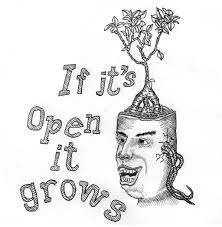The CIO Blog
Ten Core Attributes of a typical CIO – A CIO’s Perspective
The illustration below (in my mind) depicts people above technology, connected to a network, with the CIO being strategically placed at the centre of his/her Management team. I liken the maturing of the modern-day ICT team to the emergence of those people out of the technology quagmire that has damaged the relationship between ICT and the Business, almost beyond repair.

In this blog I’ll present ten core attributes that underpin the role of an effective CIO – one of the essential ingredients in the ICT to Digital Playbook. These attributes or traits will typically be complimented by a variety of skills and capabilities depending on the nature of a CIO’s role as well as the characteristics of the individuals in that role. Nonetheless, those core attributes establish a fundamental blueprint to lead an organisation through this challenging transition.

1. Ability to craft and articulate a vision
Whether it relates to a vision for a digital business, or to defining the characteristics of an ICT Department five years down the track, or a new Digital operating model? As a CIO you need to set the vision and perhaps more importantly you need to articulate it, in business terms, to different audiences with different interests. In doing so you will need to take your key stakeholders with you on that journey.
In a task-oriented industry, you must avoid the temptation to embark on the journey before clarifying the destination in order to avoid going nowhere fast. When your vision is clear, you will be able to enlist the support of stakeholders (including staff) to help in plotting a roadmap to take you there.

2. Big picture (strategic) focus – always have a game plan
Tactics and strategies may vary over time, but it is critical to have an overall game plan. To do this you need to understand the levers that you might need to pull at any time to modify or maintain your course.
You will need to respond to incidents that take place and opportunities that arise within the context of that overall game plan. You can modify your game plan, but you will need to incorporate the aspirations of your stakeholders. Your long-term plan may include a move to an external managed service model. However, this may be dependent on successfully consolidating (internal and external) resources from across the business
3. Continuous stakeholder engagement
Getting to know your key stakeholders, and their motivations, should be a priority when starting as a CIO. These might comprise Board members, executive managers, business and ICT managers, end-users, staff, and/or vendors. You need to gain insight into their needs and expectations as well as recognising specific agendas. Essentially, you will need to gain their TRUST.
At some point you may need to back one stakeholder group against another or you may need to convince one or more stakeholders to support your agenda. Building and nurturing stakeholder relationships may be vital in safeguarding your own success.


4. Relentless determination
If at first you don’t succeed, change tack. It might take several attempts to gain acceptance to proposed changes but if you believe it is change for the collective good, then you will need to make it happen.
I recall a move to curtail Shadow-ICT was hindered by local resistance. Inclusion of the impacted Executive Managers on the Project Control Group (PCG) resulted in a standard set of tests that could be applied and tested in each instance. In another situation we facilitated migration of (80) legacy systems and the introduction of an ERP. Initial resistance was high, but a strong business case was eventually established to support the initiative.
5. Business and technical (ICT) acumen
Learn about your customers’ business. Understand the drivers, goals and objectives, and their priorities. It’s not your role to be the expert in their business but by appreciating its dimensions you will be well placed to offer them advice and to sharpen your value proposition.

As the demand for Digital and ICT services is on the increase, you will constantly need to tune your business model to innovate on supply. ICT receives the bulk of its feedback when things go wrong and less so when things go well. As a CIO it is crucial to reflect the positive side of your business whilst acknowledging and taking responsibility or any shortfalls. Managing ICT like a business, with full transparency, is one step towards achieving alignment.
6. Emotional Intelligence
Everyone deserves respect just as everyone has the potential to exhaust their respect quota. Some managers that purport to be leaders, demand that everyone should earn their respect. At the same time, practicing emotional intelligence does not equate to being a ‘push-over’.

People need to be cognisant of other people’s feelings. A CIO needs to be able to read and interpret the expressions, emotions and body language of staff, business associates and C-level Executives on a daily basis. Unless your responses are in sync with other peoples’ feelings you risk losing support, followers, or even losing the plot. Often a CIO adds value merely by pushing back on a colleague’s bad behaviour leaving them to re-evaluate their delivery. Not pushing back will quickly be interpreted as endorsement and potentially lead to the loss of credibility and respect.

7. Politically Savvy
As a CIO, the option to opt out of the ‘politics’ in an organisation is unlikely to be afforded. As much as you may dislike it, you will most likely need to get involved to some extent, otherwise ‘CIO’ might quickly turn into ‘Career Is Over’. The difference between being a CIO and part of the C-level suite and not being, is that you get the opportunity to be part of the politics (i.e. having influence and not just being affected by them).
‘Politically Savvy’ is more about understanding organisation politics rather than becoming embroiled in them. Unless you are across the political landscape, positioning yourself in neutral corners can be challenging. A CIO will often have an ambitious change or transformation agenda. Enlisting the support of C-Level colleagues may be essential if that agenda is to see the light of day.
8. Keeping an open mind
ICT shops are frequently seen as Ivory Towers by the Business. There is a tendency for ideas from the Business to be dismissed out of hand, particularly when these involve ‘shadow IT’. This has been evident as the power has unquestionably shifted from ICT to the business.
At the same time, CIOs are often perceived to discard the notion that staff contribute value to strategic planning although they are frequently located on the front-line and better placed to judge.

CIOs need to recognise that most innovation comes from the Business and not ICT. A CIO’s responsibility is to help and facilitate, incubate, nurture and resource such initiatives using bimodal, codesign and agile approaches. This is the right time for collaborative techniques and tools to be used to break down the barriers between business and ICT and the CIO must be a collaborative partner.

9. Advocate for the Business and for ICT
Champion your business customers to your ICT teams. Try to encourage a customer-centric approach and attitude by rewarding and encouraging collaborative behaviours. The ICT team must recognise and appreciate the value of customer loyalty to them – especially now that it can no longer be assumed that customers have no alternatives.
Unless your customers can see value in doing business with you, they will seek other alternatives. With the rapid growth of SaaS and other cloud solutions and the growing sophistication of the digital customer experience, even ICT Departments will need to expand their value proposition(s) and consider personalisation on a customer by customer basis.
10. A focus on the day to day with an eye on tomorrow
If you are consumed with operational issues you are in danger of being overlooked for the main game. Priority one is to take care of your day to day business. If systems keep failing or reliable and timely reporting is lacking, then your scarce resources will be preoccupied with resolving day to day issues. Meanwhile, business areas will reach out to independent contractors or boutique vendors to satisfy their strategic and/or tactical needs. Adaptive CIOs might look to establish an intermediary service (at least as a transitional response) and to reposition ICT from a service provider to a service broker.

Conclusion
Fundamentally, the CIO is a leadership role with a focus on information and all things that underpin it as an enterprise asset. Each of the aforementioned traits have played a part in my career. I invite other current and ex CIOs to comment in relation to their own experiences and highlight any other key traits that they believe have been prominent in their careers.
About the Author
Tony Welsh started his ICT career in the UK in retail banking. He moved as a Senior Consultant with LBMS (London) to join KPMG in New Zealand and subsequently to the position of ICT Director (CIO) at Wellington City Council. He moved with his family to Australia in late 1999 to commence as GM Information Services (CIO) for Queensland Rail and he subsequently spent 6 years as CIO for Brisbane City Council (BCC) the then largest Council in the Southern Hemisphere. Tony most recently completed 16 months as the Interim CIO for Ipswich City Council in Queensland.
CIOco is available for short and long term engagements and for advisory services and we can be contacted on +61 407 025 750 or at [email protected] or via our website at CIOco.com.au.
